unless otherwise noted, all photos by MB Maher
There is a new waterfront reclamation project in New York City that will take some heat off the 12-year-old High Line as the punching bag for unintended urban renewal consequences. The old elevated railway reimagined by James Corner for plants, people, and wildlife instead of rail cars, and planted by New Perennialist Piet Oudolf, has become a vilified victim of its huge success. Adored by tourists for its sky-high meadowy strolls and unparalleled views, the High Line has been accused of instigating expensive high-rise development along its length, rampant selfie tourism and a host of other neighborhood-changing ills. And the High Line and Little Island have something else in common — their funding source. Media mogul Barry Diller was the largest single contributor to the High Line. With funding for repairs to storm-damaged Pier 54 hitting a dry well, the Hudson River Trust decided to also approach Diller, and he agreed, stipulating that he wasn′t interested in mere renovation of the pier but something ambitiously iconic, like the Sydney Opera House.
After several years of negotiations and the occasional legal battle, the finished Little Island is assuredly iconic, comprised of 132 tulip-shaped “pots,” each configured for differing load capacities and offering an array of microclimates to plant.
Throughout its development and opening in May 2021, Little Island has also aroused heated discussion about high-dollar vanity projects, local control, destinations that attract tourism vs. green space for locals, gentrification spillover effects, and lord knows what else. Loved or loathed, without the Medici-money patronage of the Diller von Furstenburg Foundation ($260 million), such projects as Little Island would be dead in the water.
I confess that I look at such projects through a very narrow lens, which pretty much begins and ends with if and how they support plant life. And like the High Line, Little Island very much made supporting the growth and health of plants a priority on its 2 and a half acre site. Like the space program, such projects are an investment in necessary future technologies — the work to make Little Island can only push engineering and technological innovation in an important direction for greening up land-starved, flood-prone cities in the 21st century.
I was able to get a closer look at Little Island when Mitch visited NYC a couple weeks ago.
From the audio tour by landscape architect Signe Nielsen (highly recommended!), I learned that of the 114 trees planted in 2020, 19 are considered “hero” trees, any tree with a 10 or 12 inch caliper with ultimate heights of 60 to 80 feet. The trees need at least 6 feet of planting depth. Seventy percent of the deciduous trees are native. Salt-spray pollution required highly resilient evergreens — accordingly, just 30 percent of the evergreen trees are native. To keep the trees from blowing over in the maritime climate, the trees are anchored to the underlying deck itself via a system of 4 to 10 steel straps resting on the root balls. It′s an invisible, subterranean system of support that has already weathered a 2020 hurricane.
(Checking to see if the park is open after Hurricane Ida, they are still accepting timed entry reservations after 12 p.m. No reservations are necessary for visits between 6 a.m. and 12 p.m.)
Planting runs the gamut from 66,000 spring bulbs, 270 varieties of grasses, vines and perennials, shrubs and lawn, all the way up to heroic trees like the Cedar of Lebanon, weighing 16-20,000 pounds. Apart from aesthetics, concealing and revealing views, plants are also chosen for their ability to hold soil, block wind and noise, and wet tolerance.
Landscape architect Signe Nielsen says the chief challenge will be maintaining the integrity of the three hills, which are made from Geofoam — large blocks of lightweight, nonabsorbent, styrofoam-like material.
In planning the project, the most crucial aspect of the tight collaboration between landscape architecture and engineering was of course weight load. A year of 3D modeling among the teams involved reconfiguring the tulip pots, including redesign of 30 to 40 percent of the pots due to the weight load challenges.
Ms. Nielsen surprisingly cites Gertrude Jekyll as an influence in designing the planting of the three hills with six distinct seasons, including early and late spring, early and late summer. As well as seasons, time of day was also considered for views at early morning, dusk, shade at mid-day — she sincerely hopes everyone can find their favorite tree and their special spot to catch the sun or evening cityscape. After the strain of ciphering weight loads and root zone depth, she found her quiet moment of joy when finishing a small planting of creeping thyme and orange coneflowers.
The intent of the design was to offer a varied set of experiences calibrated by pace of movement, changes in elevation, opportunities for different routes. (The park is ADA accessible.)
There is vastly more to this complex project than what little I′ve touched on here. Some of my reading can be found here, here, here, and here. As always, where included, the readers′ comments are a helpful complement to the articles.


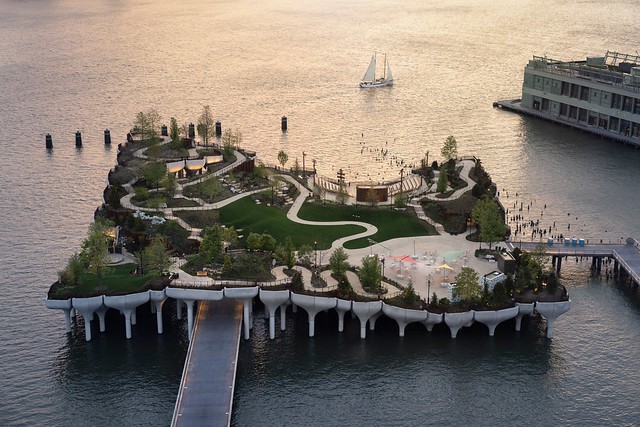
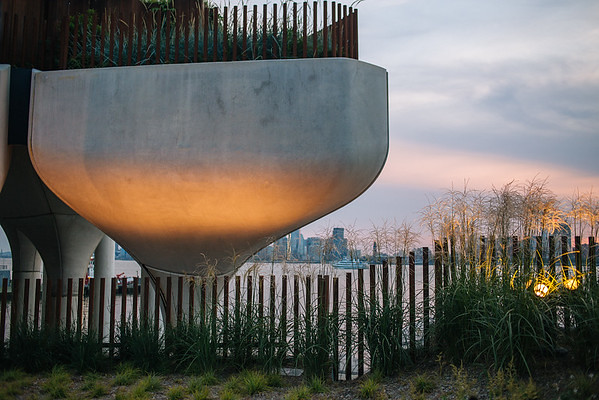





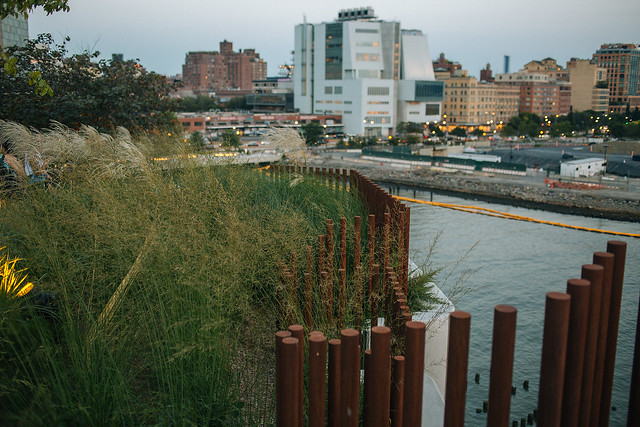


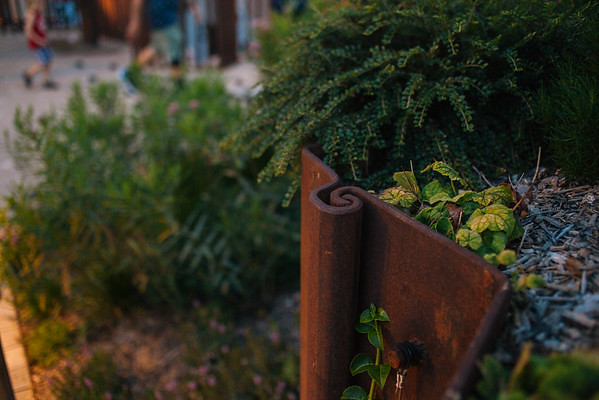
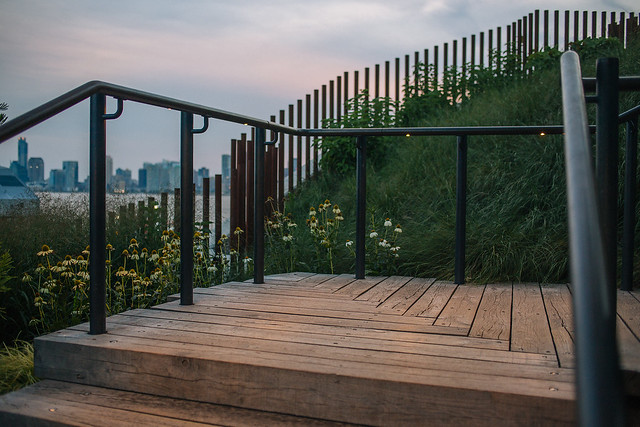


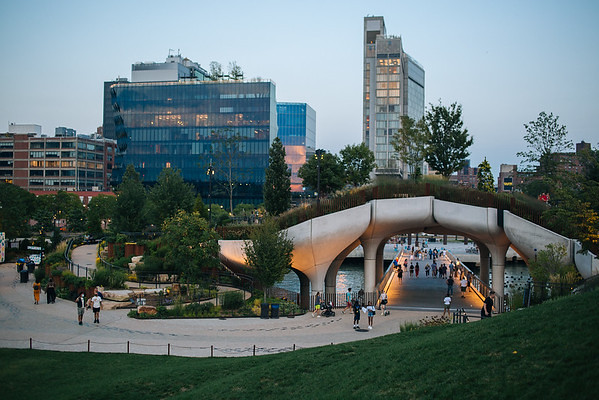
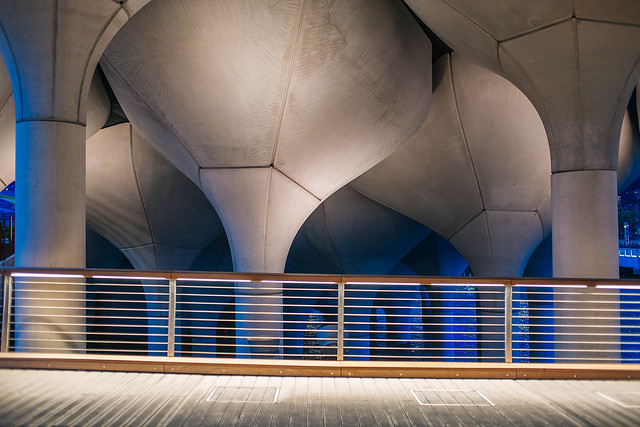
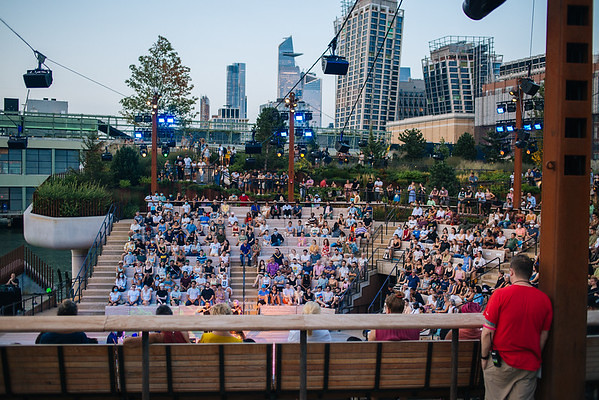
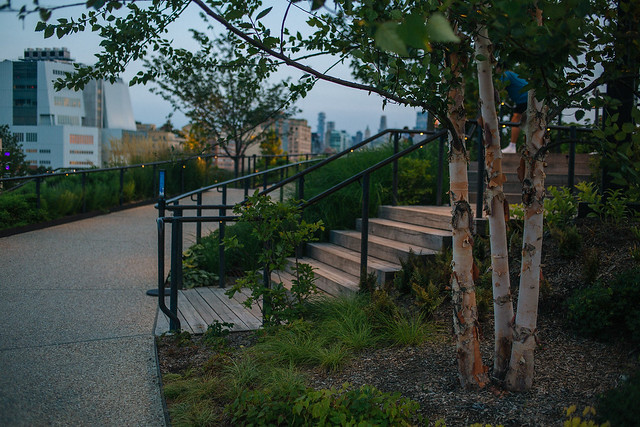


The loose visionary connection to the the Sydney Opera House struck a cord with me as I remember that my first sight of this project in another online post brought that parallel to mind. I’m impressed by the amount of thought and planning that went into the project, especially with respect to the plant selections. I hope to see it in person one day.
I’d not heard of this – how very cool!
As always, who is this for (whose input influences ticketed programming, for example), what could it have cost had it been done fully publicly, and given that public funds, resources, and legal support were nonetheless gifted to it, which New Yorkers got a say and which will get a say about its future should its existence, operations, and impact prove untenable to public interest.
Who, in other words, will be entitled to occupy the park and steer its future? What’s in store for all the other piers allowed to fall into disrepair because of mutable bouts of austerity imposed by city and state governments?
Very twee and precious. It certainly photographs well. If only locals could enjoy similar zoning, environmental, and architectural freedom when pursuing more pedestrian aspirations, like housing. And in the same vein, if only the private entities that own NYC ostensibly “public” spaces would stop disparaging the city as a hellhole in need of ‘escape’ from. Which sentiment, I suppose, goes in some way of explaining why access to the free portion is time-limited and dependent on advance reservation, the better to manufacture an artificial emptiness where the bedrock of the city, its people, are sanitarily scarce in number and fitted with a precise expiration date.
One silver lining: as an island, it’s not being directly weaponized to artificially raise property values and rob New Yorkers of increasingly rare affordable living. Kudos to the billionaires who decided the High Line had done enough damage transforming actual neighborhoods into garden blawg n ‘gram destinations.
As for the supposed technological innovation on display here, the brand-new piles are visible in an attempt to suggest clever repurposing of some hulking, ancient industrial infrastructure, and the pretty prefab stuff represent the same affordable components American nimby citydwellers complain will stain the character of their exclusive neighborhoods whenever reasonably-priced, modest, no frills multifamily housing is proposed to take the place of a parking lot or a lot occupied by a squat chain diner they themselves would never deign to patronize. Ditto the extensive “3-d design” the island’s designer boasts about. All of this is already old hat, cheap methods and materials that have been rejected as bleak, terrifying, and unseemly when proposed to be used for low income housing and adjacent services in pursuit of urban density, which done well is actually an environmentally sound investment.
@Kris, Im so ready to visit NYC again too!
@Joanie, its been a little under the radar on the West Coast.
@Saurs, the timed reservations are because the park is so small. Diller has agreed to fund its upkeep for 20 years — and thank you for so eloquently expressing the anti POV! Ive read lots of comments re why doesnt this money go to something worthier, like homeless housing? Because its private money, and thats how Diller chose to spend it. The Hudson River Trust was getting nowhere without a megadonor, unfortunately.
Thanks to you and Mitch for this detailed look at a project I hadn’t even heard of. Hurricane Ida seems to have been a pretty stringent test for the new assemblage. I don’t have a lot of hope for change in NYC under the new mayor, but hope for some statewide and at the next city elections.
There is something very 1960s-70s about the concrete “tulips”.
We’d talked about a NYC trip this fall, when it looked like COVID was under control and walking wasn’t an issue for me. Maybe next year…
@Nell, you are most welcome, and your comments are always a big reward for blogging!
@Loree, this maybe next year stuff is getting old!
My biggest question regarding this project is a technical one; what they ended up using as their soil medium mix for long-term sustainability of the plantings, and avoiding the problems of soil levels settling over time below the initial elevations. It’s one of the main issues with roof top gardens and long term success of the design and plantings. I’m assuming it’s a completely artificial medium with no organic component to avoid soil settlement issues discovered with the then accepted practice of the ‘UC Mix’ specified by earlier 1970’s installations like the Oakland Museum Rooftop gardens. I’ve had to relearn this lesson for myself in designing large raised beds of 4 to 5 foot tall concrete planters, and made the mistake of using a mix with an organic component. Sad to say there’s little one can do 10 years after the fact when levels have dropped over a foot…